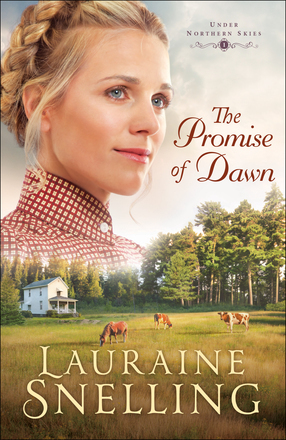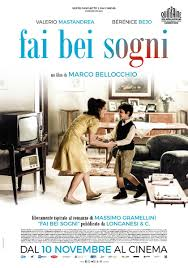
TW: Child abuse, sexual abuse
A few months ago, a friend of mine gave me the book A Little Life by Hanya Yanagihara and I’ll admit the size intimidated me. I researched the author and was immediately interested in reading more from her. I found out that A Little Life was actually her second novel and that she had written The People in the Trees before but the novel did not gather as attention as A Little Life. So for my 21st birthday, when my flatmate asked what I wanted, I asked for The People in the Trees. The book is roughly based on the life of Dr D. Carleton Gajdusek, a Nobel Prize winning scientist who discovered a disease among a tribe in Papua New Guinea. However, later on in his life, he was found guilty of sexually abusing many of the children he adopted, these children were from Papua New Guinea. Yanagihara, takes this story and gives it life in her novel. The novel’s protagonist, Dr Norton Perina, a Nobel Prize winning doctor, discovered Selene syndrome, a medical condition that alters aging among the people of Ivu’ivu in the Micronesian country of U’ivu. Perina discovered that the reason a few people on the island lived for decades longer than the average life-expectancy on the island was because of their consumption of the Opa’ivu’eke, a rare turtle. Perina found that even though their bodies stopped ageing, their minds slowly regressed making some of them infantile. After decades of success, and after he adopted more than 40 children from the island, one of his children accused him of sexual abuse leading to his imprisonment. The novel takes the form of a memoir written by Perina and edited by Dr Ronald Kubodera, a close friend and colleague.
From the moment I started reading the novel, I did not want to like Perina and to be honest, not just because he is a paedophile. He comes across as indifferent and insolent all at the same time. He’s obviously intelligent as he gets into medical school yet he puts in little effort. It is almost like he expects life to give him something he deems worth his time. He calls medical school dull and his peers unimaginative yet does nothing to create any excitement for himself. He also has a talent for finding himself in extraordinary situations and seems to me to be a person who merely falls into greatness. I found myself surprised that it was he who ‘discovered’ Selene syndrome because of how mediocre his life had been before that. Even when it came to his children, he found himself taking them sometimes because he just couldn’t say no or simply pitied them. Perina’s mediocrity bored me and shocked me simultaneously.
Yanagihara’s brilliant writing made the novel both captivating and thrilling. Although I tried my best not to like Perina, I found myself routing for his success and looking forward to more details of his experiences. Yanagihara manages to create U’ivu and bring it to life. I read most of this novel sitting on the sofa in my living room, feeling like I was surrounded by the flora and fauna she describes. In the memoir, Perina describes a forest that lives and breathes. Every step reveals new fruits, plants and animals he had never seen before – orchids the size of small insects, beetles the size of turtles and turtles wider than bath tubs. Personally, I found the Manama fruit most fascinating, a mango-like fruit laced with hunono worms beneath the surface of its skin. As I read the novel, it felt like I could see, touch, taste and smell the fruit. With writing like this, it was easy for me to get lost in Perina’s story and forget about his crimes.
Scenery aside, because of Yanagihara’s decision to leave out Perina’s account of his own paedophilia for much of the novel and at the same time reveal his paedophilia from the beginning of the novel, I found myself anticipating his account of his abuse and analysing every encounter he had with male children. Whenever he described a boy as beautiful or revealed that he enjoyed the company of children, I started drawing conclusions and trying to trace early signs of his paedophilia. When Perina’s abuse is revealed, Yanagihara left me wanting more detail because of its brevity. I liked that she didn’t set herself with the task of explaining why, Perina nonchalantly recounts his various abuses almost as though he doesn’t know his actions were wrong.
One of the things I found most heart-breaking about the novel was the fate of U’ivu. Before Perina’s discovery, the country was unknown and unimportant. Perina and the other two Americans he was with were the only Westerners on the island which was shielded from the West. However, after Perina’s discovery, all the Opa’ivu’eke turtles were captured and the people of U’ivu were left poor with many of them becoming alcoholics. Yanagihara describes the fall of the island at length and what started as a rich vibrant island, ends starved of all life. Reading about U’ivu reminded me of seminars I had attended about imperialism and colonialism. The Western world ‘discovered’ something of value in U’ivu, dehumanised the people, destroyed the land and enriched themselves all in the space of a few years.
I enjoyed reading The People in the Trees and I surprised myself by finishing and enjoying a novel with a straight white man at its core. I’m definitely going to get over my fear of massive books and read A Little Life because I know the writing will be vibrant and the story will be compelling. I loved The People in the Trees and for me, it is the perfect novel for times when you want an escape, when you want to lie back and get lost in writing.
Advertisements Share this:






